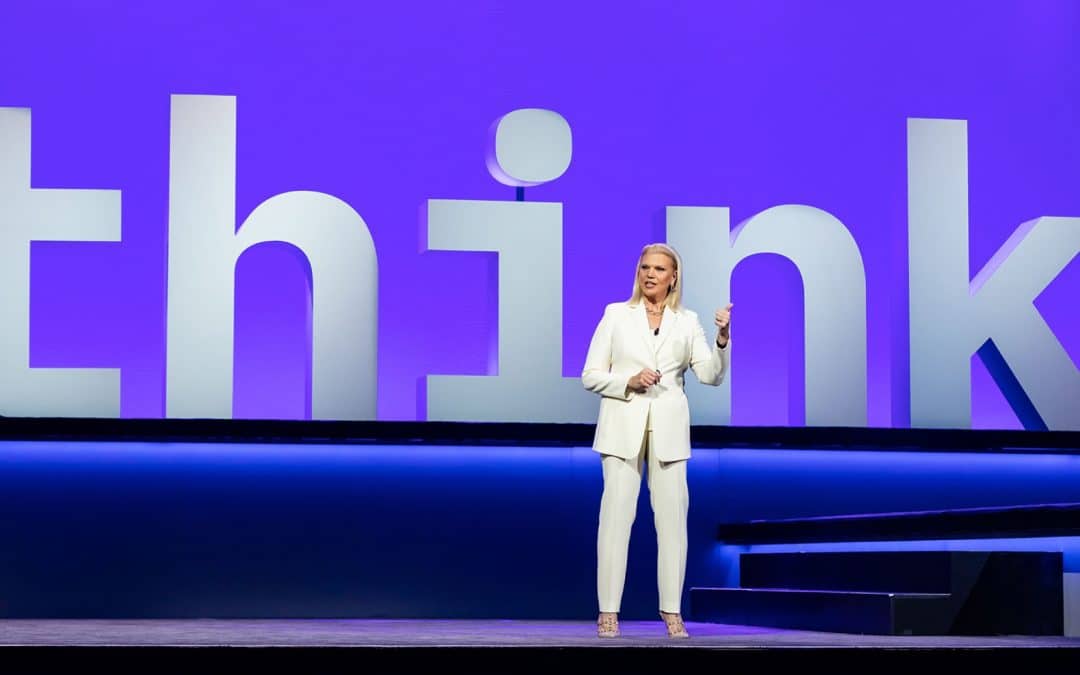By Alex Coop
IBM Corp. is leaning heavily on an acquisition firm from Toronto to help it build a network of hybrid cloud solution providers focused on its technologies.
Converge Technology Partners, IBM’s third largest partner – and quickly on its way to becoming the largest – began its quest to become North America’s largest player in the hybrid cloud market in 2017 when it acquired Corus360, a small software company from the U.S with a strong presence around Florida.
Converge didn’t stop there, and by 2019, acquired a total of eight software and hardware resellers, two of which are based in Canada. Converge is also trading on the Toronto Stock Exchange, and expects to be a $3 billion organization by 2021, according to Greg Berard, president of Converge’s east coast business, who participated in a fireside chat with IBM executives at Partnerworld Think last week.
“Multi cloud is the direction our clients are heading,” he said, noting it was also the direction he witnessed clients taking prior to his role with Converge when he was president of Lighthouse Computer Services, one of Converge’s earlier acquisitions that specialized primarily in IBM’s storage portfolio.
Five years ago Berard helped Lighthouse pivot more towards software through some strategic acquisitions that quickly helped meet the increased customer demand for analytics and cloud-based services. Berard said for the first time last year, Lighthouse made more money from software than hardware. It’s this quick turnaround that Converge is hoping to replicate by turning the small regional partners it acquires into multi-talented channel players that know how to add value to technology belonging to the biggest brands in the market, including Dell EMC, Cisco, VMware, Amazon, Pure Storage, and of course, IBM. Lighthouse, and Converge, recently made investments in Red Hat as well.
These moves inevitably caught the attention of IBM, since many of the partners involved with Converge’s rapid expansion were theirs. IBM, of course, has found itself in recent years building more products that play well with competitors’ technologies, and is relying more on its business partners to expand the IBM footprint. Combine that with last year’s acquisition of Red Hat, and it’s clear IBM is serious about changing its priorities for the future. It’s a lot of change for the IBM and Red Hat partner communities to navigate, which is not easy when Big Blue – by its own admission – has been slow to adopt change.

It made sense to lean on Converge’s success, explained John Teltsch, general manager of IBM Partner Ecosystem, and for IBM to insert itself into the equation. And while Converge’s ability to quickly acquire the right-minded organizations with surgical precision was impressive, it wasn’t the main reason IBM decided to leverage their expertise.
“We’re on this journey to get all of our IBMers re-skilled…re-educated about where we are going as a company,” said Teltsch. “We have to be sensitive to [Red Hat’s] client sets which are also some of our major competitors…you’re not gonna see us take the IBM and Red Hat channel and crush them together immediately.”
Shaun Maine, Converge’s CEO, had positive things to say about IBM’s partner programs.
“A lot of your partner programs make it easier for me to buy companies and have them interact with each other,” explained Maine, while applauding IBM’s latest announcements around Software Deal Registration and IBM Business Partner Connect.
When it comes to aligning IBM and Red Hat channel partner communities, IBM is placing a lot of its hopes on Dorothy Copeland, formerly AWS’ global channel boss, now IBM’s channel lead in North America. Teltsch joked that Copeland wasn’t as “blue-washed” as the rest of IBM, and was able to bring a fresh perspective to the organization.
Dorothy told CDN it’s unclear how many new partners IBM gets as part of the $34 billion acquisition, and while the challenges are aplenty when it comes to creating synergy between the two – an IBM task force called the Synergy Team aims to accomplish just that – Dorothy stressed that the added hybrid cloud expertise Red Hat brings to the table can be applied by partners of any size.
“I see a lot of opportunities for our partners … and there will be a lot of announcements around training and enablement to support them,” she said.
Speaking of that Red Hat deal …
There was a notable absence of Red Hat at IBM PartnerWorld and Think 2019, but a brief 15-minute discussion between Red Hat CEO Jim Whitehurst and IBM CEO Ginni Rometty shed some additional light on the reason why the two decided to tie the knot after years of strategic partnerships.
“We hear from our customers, ‘Well, we really like Red Hat and how you help us co-create solutions, but you don’t understand our business very well frankly… and you don’t bring the full technology stack, you’re only exposing the byproduct from user-driven innovation,’” Whitehurst said, citing customer feedback. “Combined with IBM both in your industry vertical expertise…and your IT stack that fits really well with what we’re doing, I think it leads to exciting opportunities for businesses transform.”
The acquisition, according to IBM, has received the green light from shareholders and will be finalized in the second half of 2019.


